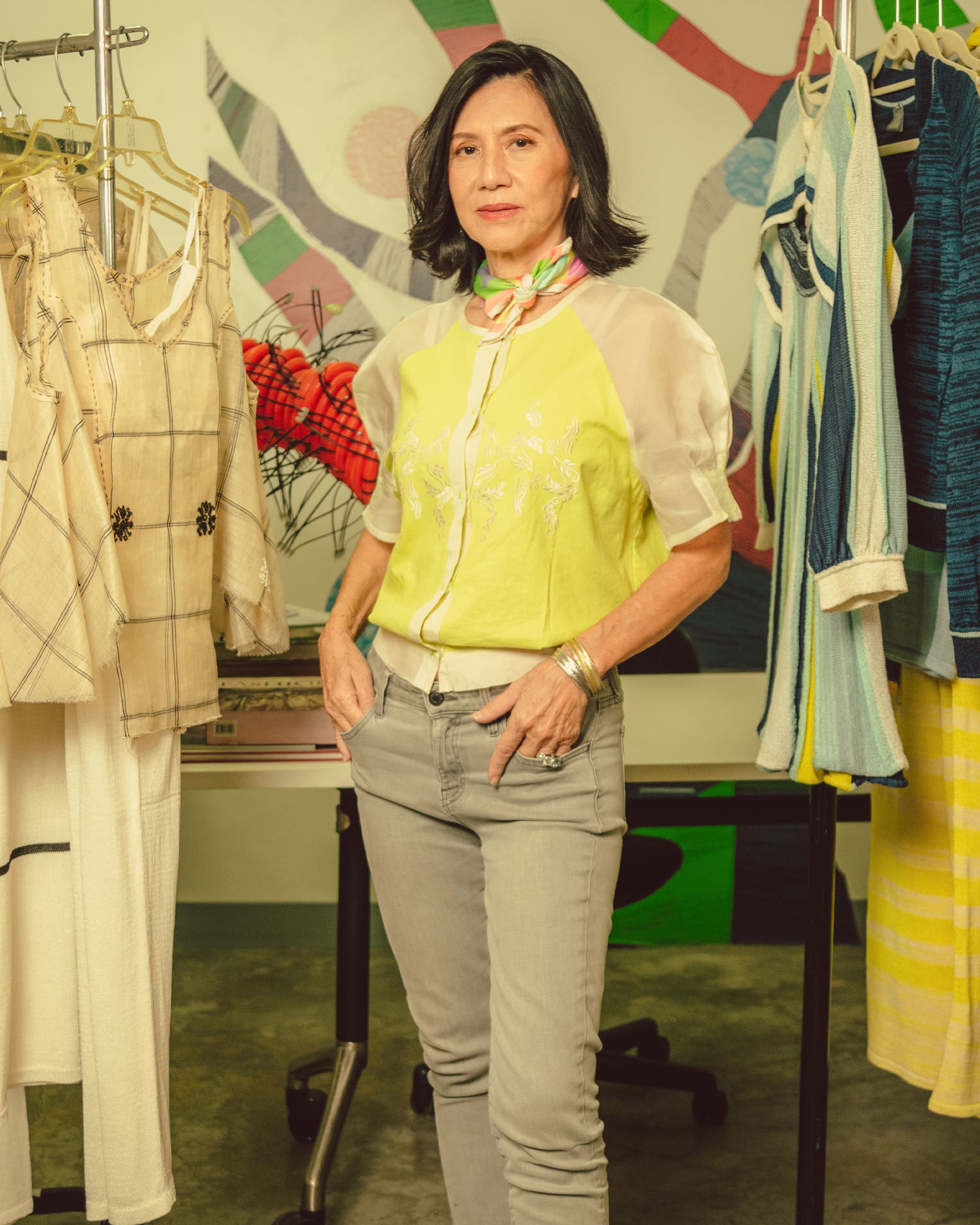Excel Palanque
Chapters PH
Lulu Tan-Gan opens her atelier to Vogue Philippines and discusses her collection of knitwear pieces.
At nine in the morning, Lulu Tan-Gan greets us in a vibrant lime-hued piña blouse paired with a sleek pair of jeans and a colorful necktie at her studio. Lively and animated, the Filipino designer radiates the energy that is seen in her renowned knitwear and piñawear. Fabric samples, rolls of yarn, and mannequins draped in hand-dyed local materials make up the various creative elements in the Tan-Gan atelier. On the table lay the 67-year-old’s archival collection that spans 30 years. Frill-imbued sweaters, striped numbers, tri-colored onesies, beaded sweater dresses, and asymmetrical silhouettes came together in the heaps of this storied collection.
Knitwear can be intensely personal, shining a spotlight on the beauty of slow fashion and one’s identity. These archival pieces have stood the test of time, yet demonstrates Filipino craftsmanship at its finest.
Blending the crafty appeal of knitwear with modern silhouettes and unconventional materials, Tan-Gan is known as the “Queen of Knits.” Understanding that clothing is mainly a sensory experience, the Manila-based designer uses skin-friendly knitwear as a base for her intricate piña pieces.
Through her archival knitwear collection, Tan-Gan takes us on a journey. “Love of craft and things hand-made have always been a part of me and I want to share this with the younger generations,” she says. Through this collection, she wants to show that “the past serves as [a] guidepost to the future.” What she asserts is that it’s important to pay tribute to one’s heritage, while harnessing the “knowledge and experience to build one’s identity.”
Below, we sit with the renowned designer as she goes through her archival knitwear collection, discussing each of her memories associated with her beloved pieces, from why she decided to create a hand-sewn sweater to a detailed account of how a form-fitting dress came to be.
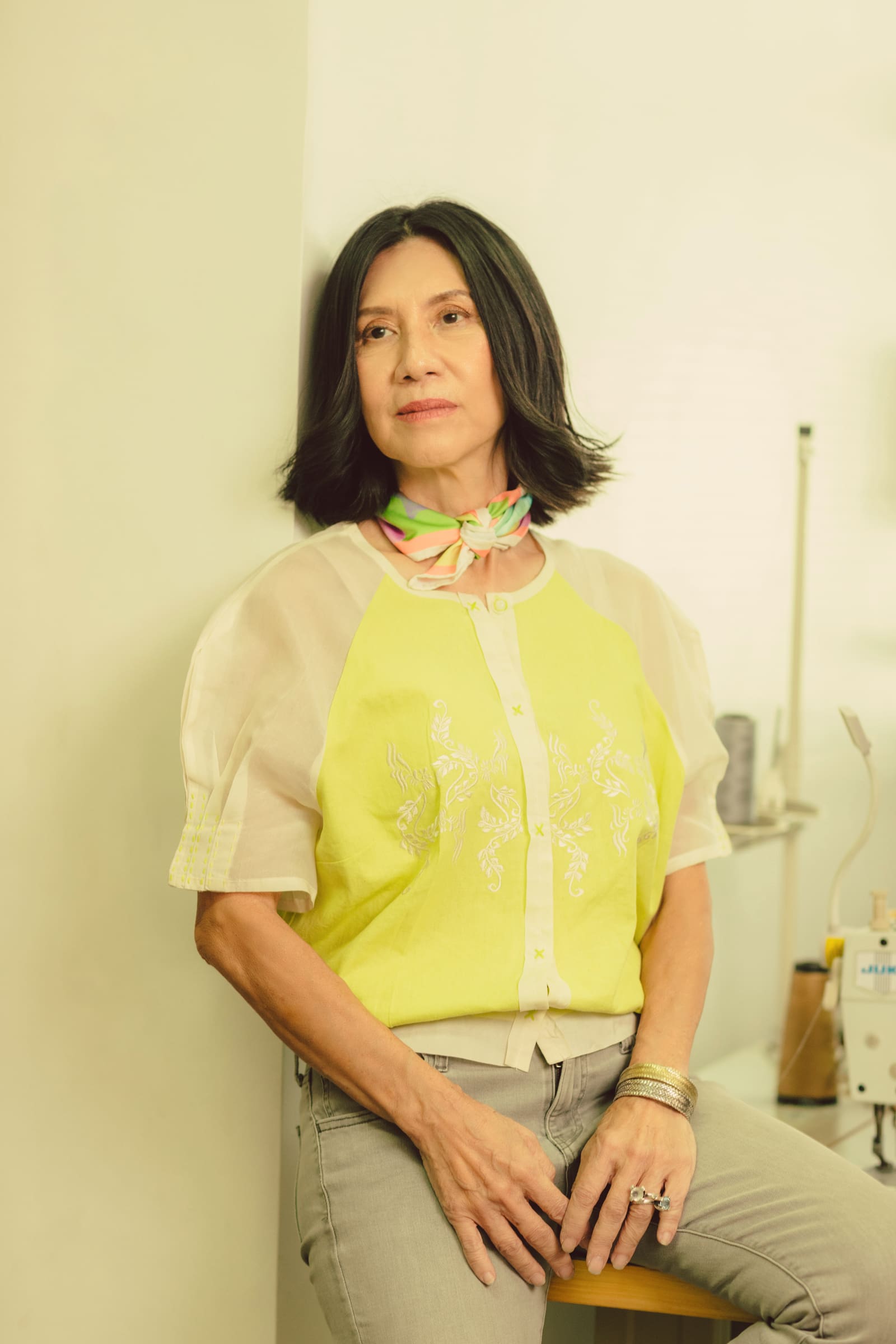
Can you tell us about how the recognition of knitwear has changed over time?
It’s only been recent that a few designers are tapping [into] knitwear. [They have] not gone mainstream [because] they do not have retail shops in commercial spaces. Love of craft and things hand-made have always been a part of me and I want to share this with the younger generations. Of course, the role of design is important. That’s when craft becomes relevant.
How has knitwear evolved through the decades?
I think knitwear, in terms of construction, has remained the same but the [yearly] fiber content has evolved. [There are] new technologies that [are] more weather-proof [with] more variety of texture like stretchability and fluffiness. Today’s yarns are also much lighter. Due to sustainability, natural fibers, and dyes have made a comeback.
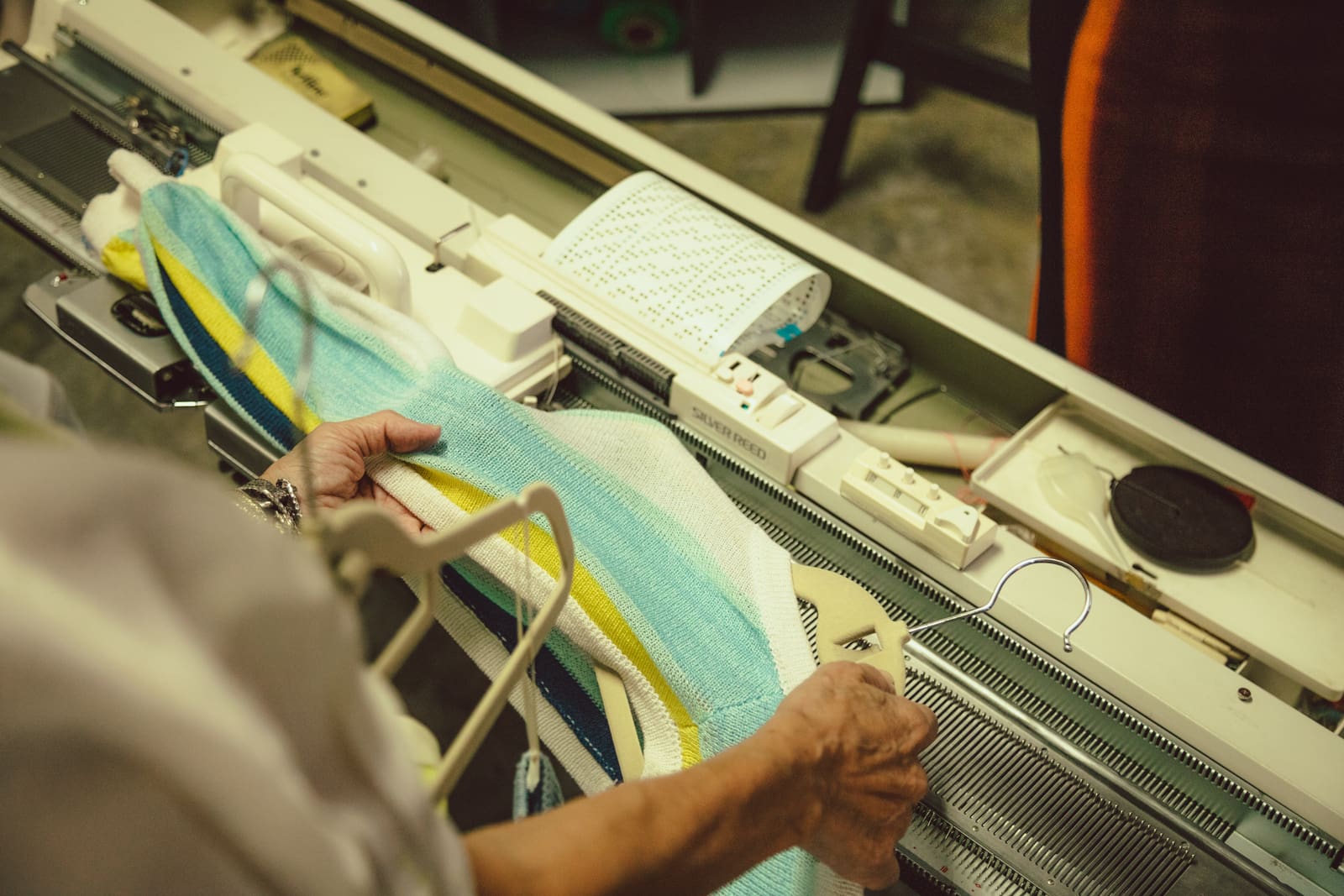
What made you decide to archive?
It seems that we lack information on what has been done in our contemporary design and crafts.
It is said that sustainability is central to a brand’s creativity. How is this highlighted through knitwear?
Tan-Gan has always been into hand-loomed knitwear, which is similar to our Philippine weave-looms. They are both hand-drawn, therefore no electricity is required in the production process. Aside from being hand-loomed, our knits are also knit-to-shape. There is no cutting and sewing, thus [there are] no remnants [and it’s] almost waste-free. Avoiding importation, we continued to support locally-made and natural materials.
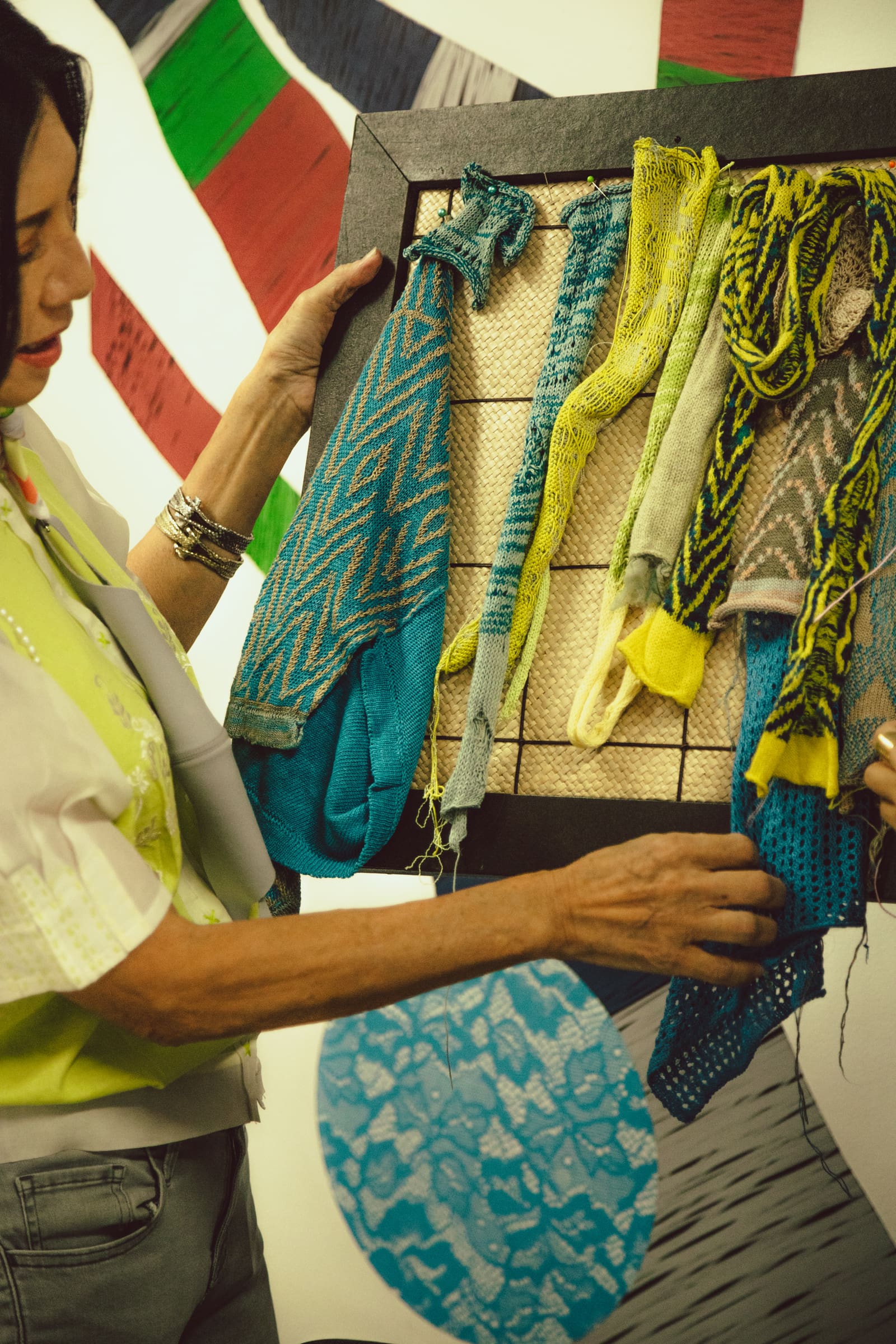
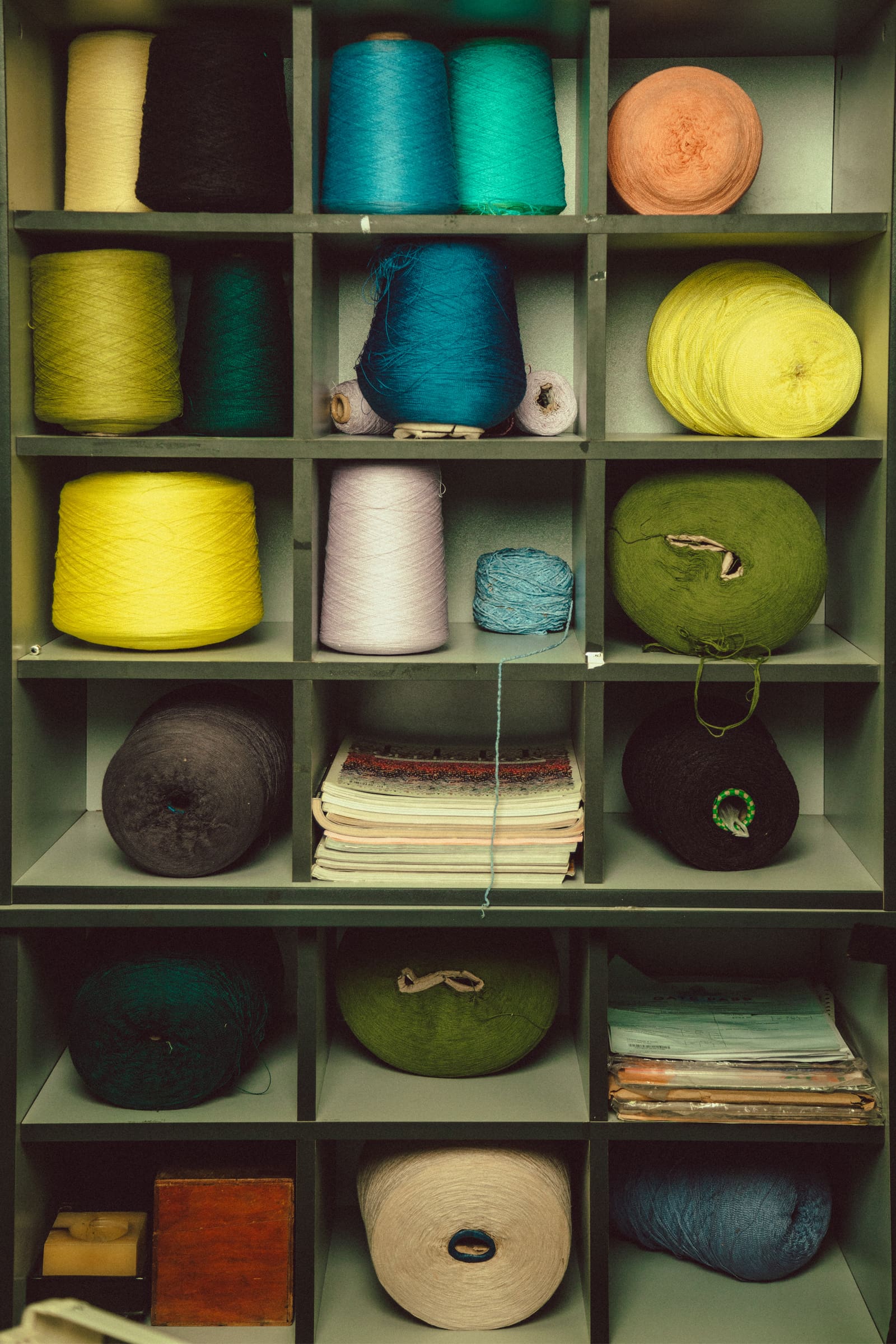
Filipinos are learning to embrace local craftsmanship.
Yes, this is a dream come true. As we were almost purely wearing imports [in] the last three decades.
How do the archival pieces incorporate our heritage? Are there any signature Filipino elements?
Filipino heritage is a mix of Eastern and Western cultures in arts and crafts. Part of our Eastern roots is the craft of weaving. Tracing back to our Western roots, we have acquired knit, crochet, lace, and certain kinds of embroidery crafts at the turn of the 19th century. Crochet [and] lace with embroidery as embellishments are evident in Filipino homes.
If there is any signature Filipino element in our archival pieces, it [would be] the use of inherited crafts influenced by our colonial heritage. In the year 2007, TAN-GAN set out to offer a contemporary take on Filipino RTW luxury fashion. With the use of indigenous materials, more specifically the use of piña (handwoven pineapple fabric), we presented and transcended piña from traditional wear into contemporary fashion.
Design-wise, we take inspiration from Filipino costumes, art, and history rather than following the fashion dictates of the catwalk. For Filipino touches, there are visual insinuations through color, weaves, fabric patterns, and the use of indigenous embellishments like wood, coco, and shells.
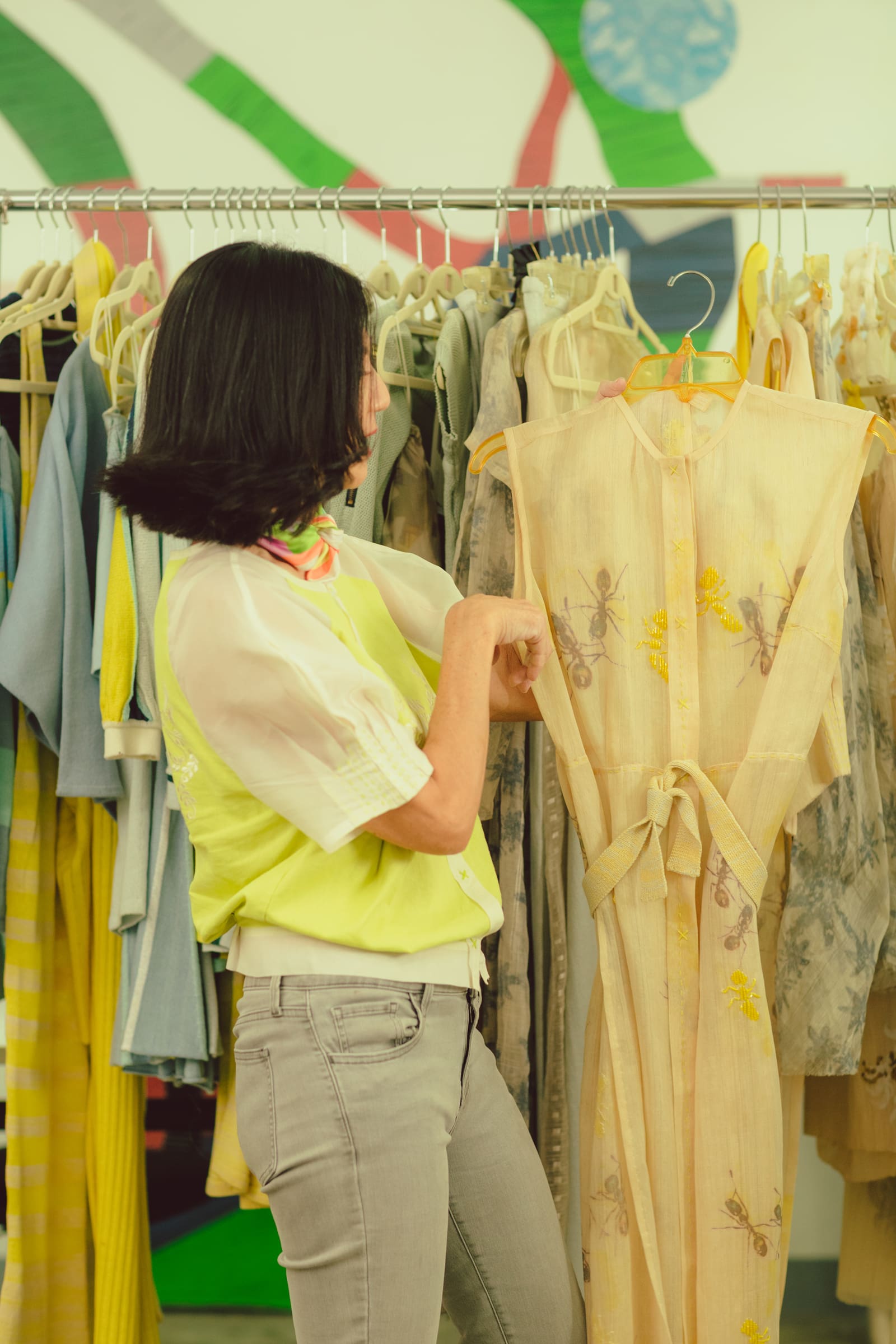
How do indigenous textiles complement knitwear or vice versa?
[The Tan-Gan] concept for knitwear is [to be] travel-friendly. [It’s] contemporary fashion for jet-setters. With our design evolution (which is the amalgamation of piña [and] our signature handcrafted knitwear fashion), we offered a contemporary take on RTW Filipino luxury fashion. We call it “Indigenous Couture.” We continue the same concept of design; patterned and engineered to be simple and functional.
In the beginning, it was challenging. I found myself working with two opposing mediums. Construction-wise, knit stretches, but piña weave does not. Knit is modern. Piña weave is traditional. Knit is strong, thick, and opaque. Piña is fragile, fine, and translucent.
By patiently experimenting, I was able to arrive at a cohesive solution to marry the two. Firstly, [I made] both textures look compatible with each other. Next, [I tried] to keep the color of the knitwear in neutral shades, such as ecru, white, and beige, to mimic the piña fabric’s natural color. Lastly, the two fabrics needed to function together. The stretchable knitwear became the inner wear for the too fragile, too transparent, and not skin-friendly Piña. This “innovation of use,” allowed the ethereal piña (without lining) to be more relevant to use.
Can you tell us about your favorite collection?
I have so many collections over the years, with so many favorites [as well]. What keeps me inspired is my interest and curiosity [of] people, places, and things. My books, magazines, and travels help a lot.


Is there anyone in particular that you like to reference throughout your creative process?
My references are Dries Van Noten and Sacai for their fabrics. For manipulation and draping, I reference Olivier Theyskens and Jean-Paul Gaultier. For construction and fit, I reference Yohji Yamamoto and Calvin Klein. For sustainability endurance, I reference Stella McCartney. For historical referencing, [there’s] Vivienne Westwood. Many non-fashion artists and designers inspire me too like Axel Vervoodt, John Frank Sabado, Jean-Michel Basquiat, and, recently Gérard Garouste.
What about for those interested in being more environmentally-conscious?
Develop [a] sustainable business that keeps clothes in use. For example: repair, repurpose, and upcycle garments. Use renewable and safe materials that are non-toxic [that] contain ingredients that are natural and from the Earth.
What advice would you give to those starting out in the industry?
Do not be afraid to be different. Explore available local crafts and craftsmen. A good craft becomes handicraft without good design. Innovate craft into contemporary design [that] the current generation can relate to. Sculpt aside from having a good concept, do not depend on your makers. For the prototype, make [it] with your own hands. You will discover and innovate a new process, technique, and design. [Always] learn basic business ethics, skills, and research. [Lastly,] study and have a mentor.
